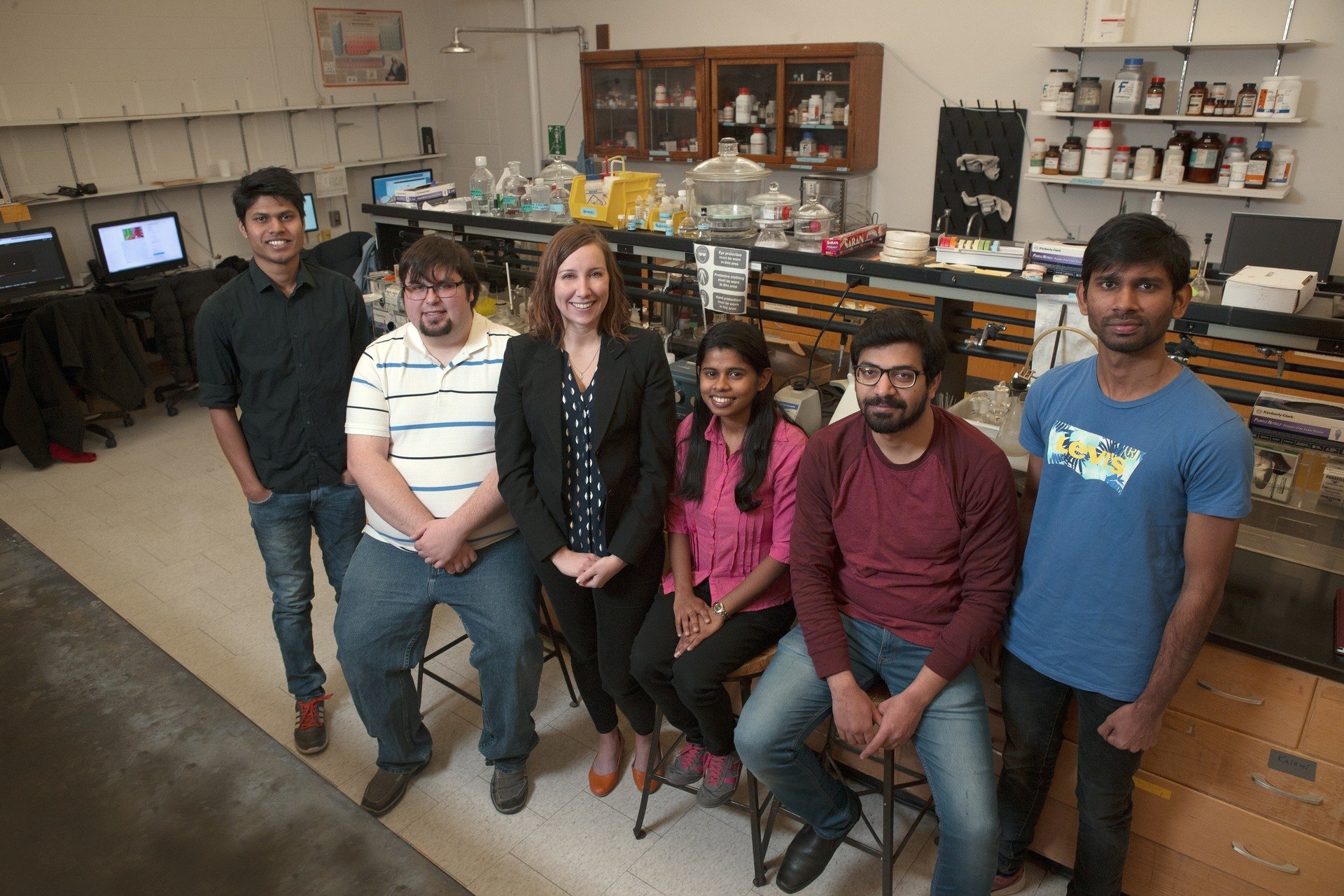Shining a light on research

Promising combinations of photoresponsive materials may offer new discoveries
BGSU photochemist Dr. Alexis Ostrowski and her lab are dedicated to making photoresponsive materials that use metal coordination and are opening new avenues of discovery.
Ostrowski is an associate professor of chemistry and was recently named the inaugural Dr. Thomas Kinstle Professor by the College of Arts and Sciences at BGSU.
The Thomas Kinstle Professorship honors the contributions of Kinstle to the department and university. He devoted his 40-year career to training students in chemistry, supervised over 50 master’s and doctoral students, and was instrumental in the early growth of the Center for Photochemical Sciences. Named a Distinguished Teaching Professor in 2004, Kinstle was also known for the design and synthesis of materials for such diverse uses as inhibiting tumor growth and improving the performance of solar cells. He was an inspirational teacher as well.
Ostrowski’s proposal for the professorship was determined to be the most promising and fit best the required “high risk/high reward” project characteristic, according to Arts and Sciences Dean Raymond Craig. The preliminary results from the project, “Materials from plant-based waste polymers with metal-coordination assembly for sustainable single-use packaging,” were seen as quite promising now and in potential for future funding, Craig said.
Additionally, Ostrowski was awarded $850,000 in National Science Foundation funding for her research over five years, including an early career grant to develop activities that effectively integrate research and education at BGSU, and a grant to look at using the power of light to transform animal waste into usable fertilizer. Ostrowski, along with Dr. Robert Midden and recently graduated doctoral student Jayan Karunarathna published a paper about the research in the Journal of Agricultural and Food Chemistry.
“We may be making materials with really interesting properties that we don’t even know yet,” she said. “This is fundamental research.”
The papers that have been published in scholarly journals have not gone unnoticed. Her lab’s research has grabbed the attention of other researchers and led to her being named one of the American Chemical Society’s “Emerging Investigators in Inorganic Photochemistry and Photophysics.”
She was described by Dr. Malcolm Forbes, director of the BGSU Center for Photochemical Sciences, as “a rising star in the field of inorganic photochemistry.
“She combines her excellent training in mechanistic inorganic photochemistry with creative ideas that push the field of biomaterials in new directions, in particular to make light-responsive polysaccharides and to study light-induced modification of surfaces,” he said.
Updated: 07/18/2020 09:42AM
